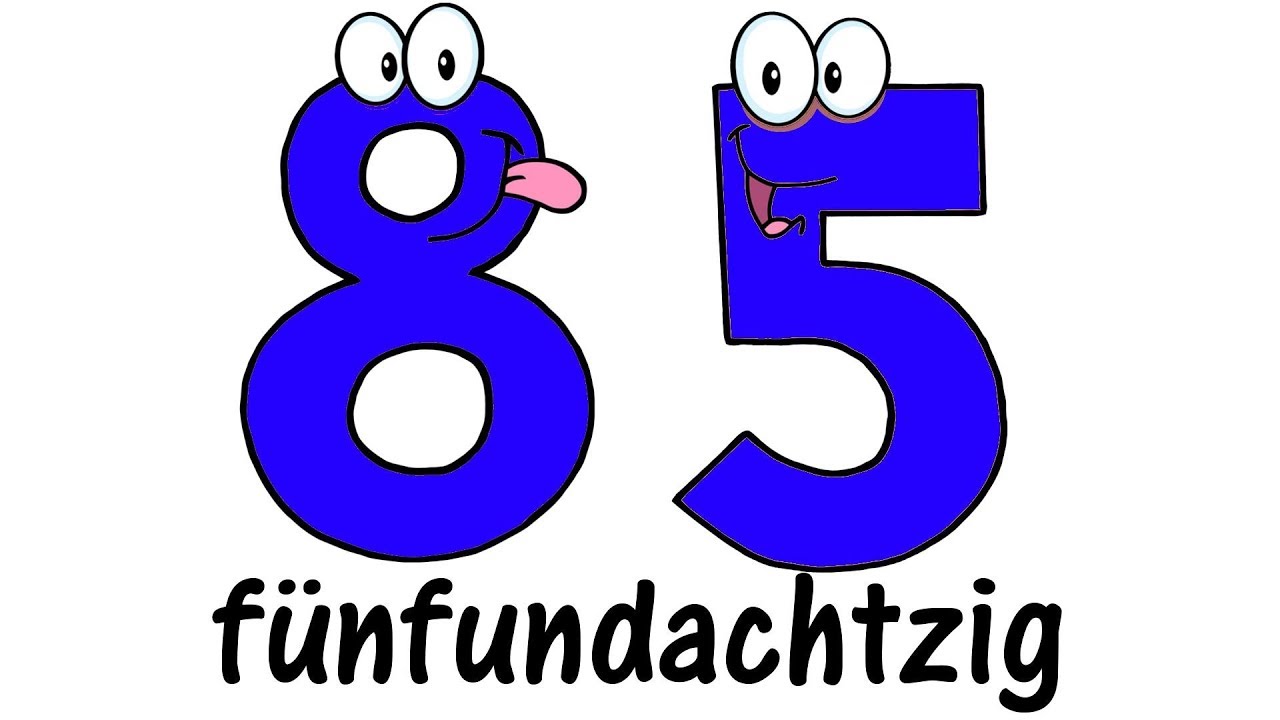In this post, you will learn German Numbers (Deutsche Zählen) and how you can pronounce the numbers up to 999,999. You don’t need to learn all German Numbers (Deutsche Zählen) from 1 to 999,999 by heart. If you see the pattern you are able to continue the series of numbers by yourself.
And don’t get confused with comma and point (decimal). In England, you write one thousand = 1,000 but in Germany, you write 1.000. Usually German don’t write numbers in words. They write one to ten in words, then just write figures like 11, 12, 13, 14, 15 …
Please also note that in some cases the „g“ at the end of a word sounds rather like a „ch“ especially when the word ends with „ig“.
Learn German Numbers (Deutsche Zählen) and Pronunciation 1 to 999999
In this lesson, you will learn how to count in German. We’ll start with the basic numbers and move on to compound numbers and dates.
Look at these below first:
- 0 = null (nool)
- 1 = eins (ayns)
- 2 = zwei (tsvay)
- 3 = drei (dray)
- 4 = vier (feer)
- 5 = fünf (fuenf)
- 6 = sechs (zêks)
- 7 = sieben (zee-ben)
- 8 = acht (âHt)
- 9 = neun (noyn)
- 10 = zehn (tseyn)
- 11 = elf (êlf)
- 12 = zwölf (tsverlf)
- 13 = dreizehn (dray-tseyn)
- 14 = vierzehn (feer-tseyn)
- 15 = fünfzehn (fuenf-tseyn)
- 16 = sechzehn (zêH-tseyn)
- 17 = siebzehn (zeep-tseyn)
- 18 = achtzehn (âHt-tseyn)
- 19 = neunzehn (noyn-tseyn)
- 20 = zwanzig (tsvân-tsiH)
These are the basic numbers in German. Notice that all of the numbers in the teens end with “zehn” for “ten.” After twenty, you simply place the smaller digit in front of the larger number and add “and.”
For example, 21-29:
- 21 = einundzwanzig (ayn-oont-tsvân-tsiH)
- 22 = zweiundzwanzig (tsvay-oont-tsvân-tsiH)
- 23 = dreiundzwanzig (dray-oont-tsvân-tsiH)
- 24 = vierundzwanzig (feer-oont-tsvân-tsiH)
- 25 = fünfundzwanzig (fuenf-oont-tsvân-tsiH)
- 26 = sechsundzwanzig (zêks-oont-tsvân-tsiH)
- 27 = siebenundzwanzig (zee-ben-oont-tsvân-tsiH)
- 28 = achtundzwanzig (âHt-oont-tsvân-tsiH)
- 29 = neunundzwanzig (noyn-oont-tsvân-tsiH)
The pattern for the rest of the numbers is very similar. Here are a few other numbers:
- 30 = dreißig (dray-siH)
- 40 = vierzig (feer-tsiH)
- 50 = fünfzig (fuenf-tsiH)
- 60 = sechzig (zêH-tsiH)
- 70 = siebzig (zeep-tsiH)
- 80 = achtzig (âHt-tsiH)
- 90 = neunzig (noyn-tsiH)
Notice that, as words, the numbers between 21 and 25 in the preceding list appear to be backward. Take the number 21, einundzwanzig (ayn-oonttsvân-tsiH), for example. In German, you actually say, “One and twenty.” Just remember to stick to this pattern for all the double-digit numbers, except for numbers in multiples of ten, like 30, 40, 50, and so on.
- 100 = hundert (hoon-dert) or einhundert (ayn-hoon-dert)
- 101 = einhunderteins (ayn-hoon-dert-ayns)
- 102 = einhundertzwei (ayn-hoon-dert-tsvay)
- 103 = einhundertdrei (ayn-hoon-dert-dray)
- 110 = einhundertzehn (ayn-hoon-dert-tseyn)
- 111 = einhundertelf (ayn-hoon-dert-elf)
- 120 = einhundertzwanzig (ayn-hoon-dert-tsvân-tsiH)
- 121 = einhunderteinundzwanzig (ayn-hoon-dert-ayn-oont-tsvân-tsiH)
- 130 = einhundertdreißig (ayn-hoon-dert-dray-siH)
- 131 = einhunderteinunddreißig (ayn-hoon-dert-ayn-oont-dray-siH)
- 140 = einhundertvierzig (ayn-hoon-dert-feer-tsiH)
- 150 = einhundertfünfzig (ayn-hoon-dert-fuenf-tsiH)
- 200 = zweihundert (tsvay-hoon-dert)
- 201 = zweihunderteins (tsvay-hoon-dert-ayns)
- 210 = zweihundertzehn (tsvay-hoon-dert-tseyn)
- 300 = dreihundert (dray-hoon-dert)
- 400 = vierhundert (feer-hoon-dert)
- 500 = fünfhundert (fuenf-hoon-dert)
- 1.000 = tausend (tou-zent) or eintausend (ayn-tou-zent)
- 1.001 = eintausendeins (ayn-tou-zent-ayns)
- 1.100 = eintausendeinhundert (ayn-tou-zent-ayn-hoon-dert)
- 2.000 = zweitausend (tsvay-tou-zent)
- 3.000 = dreitausend (dray-tou-zent)
- 10.000 = zehntausend (tseyn-tou-zent)
- 100.000 = einhunderttausend (ayn-hoon-dert-tou-zent)
- 999.999 = neunhundertneunundneunzigtausendneunhundertneunundneunzig (noyn-hoon-dert-noyn-oont-noyn-tsiH-tou-zent-noyn-hoon-dert-noyn-oont-noyn-tsiH)
In order to write dates, you need to know an altered set of numbers. One is an exception to the pattern of numbers for dates. If you want to say the first, you have to use “erste.” For the rest of the numbers 2-20, you simply add “te” to the end of the number. (7 becomes siebte). For higher numbers, you add “ste” to the end (einundzwanzigste).
Let us know for any doubt or I missed something to mention. Thanks for reading. You can also contribute by writing an article. Please follow our contact page. Don’t forget to subscribe to our newsletter.
Enter your personal email address below to subscribe to our Newsletter:
Your information is 100% safe and will not be shared with anyone else. You can unsubscribe with one click at any time.
Read Also
- Friendly allies (perfect cognates) – German (Deutsch) and English
- Things you should know about German School
- Level B – Independent use of German Language
- Easy Sentences you need for Introduce yourself in German
- Is it necessary to complete the levels of German Language for doing MS in Germany?
- 10 Most Expensive Cities to Live in Germany
- German universities where we can apply, without Uni-ASSIST
- Motivation letter for Master in Computer Science
- Applying to a German University: Uni-Assist vs Direct Application
- Reasons Why German Student Visa is Rejected
SEO Keywords
- german numbers Deutsche zählen
- learn german numbers Deutsche zählen
- learn german numbers Deutsche
- german numbers Deutsche
- numbers Deutsche zählen
